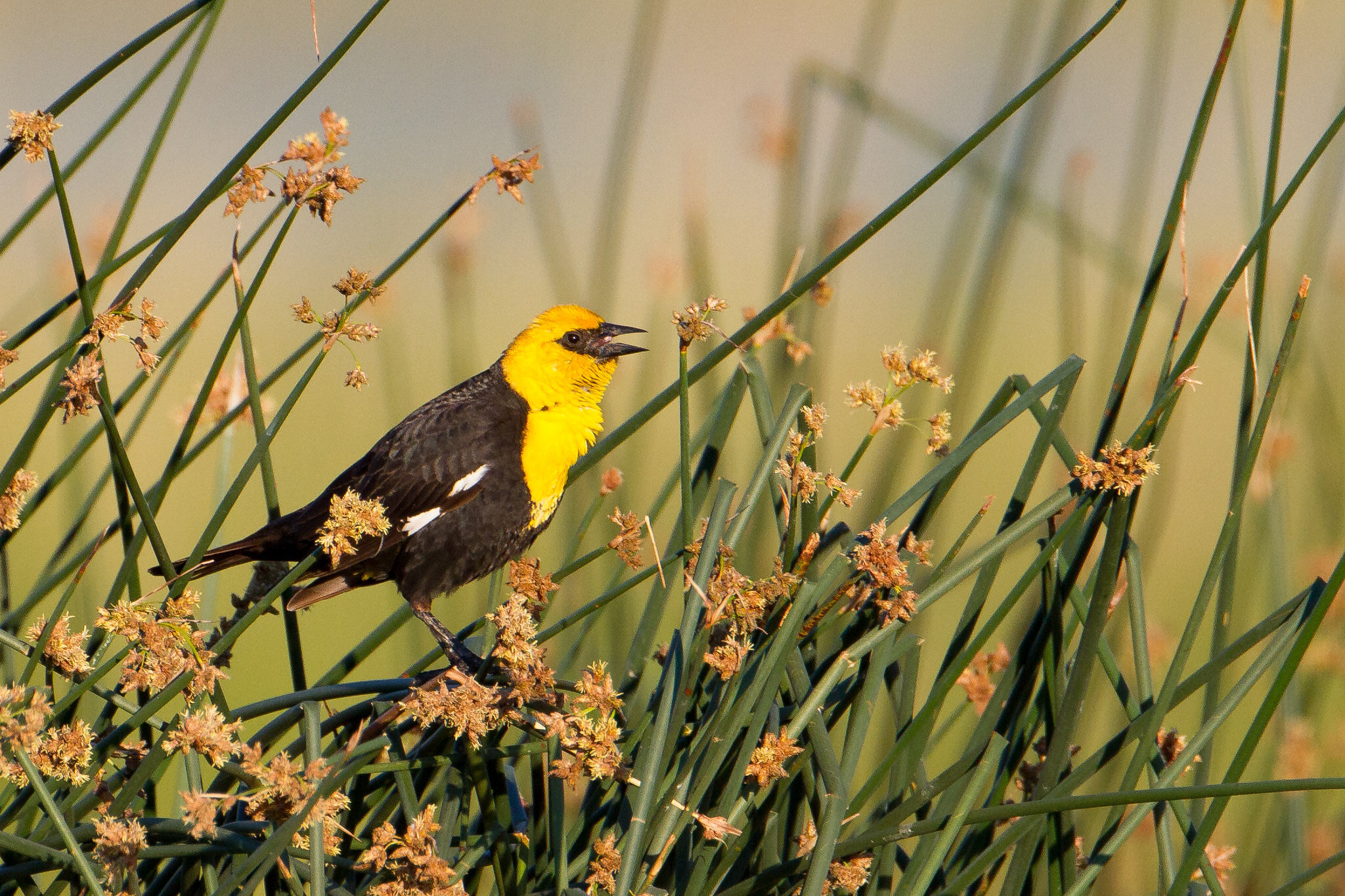Bird of the Month: Yellow-headed Blackbird
Written by Andy McCormick
Andy McCormick, Former Board President of Eastside Audubon
A conspicuous bird of freshwater marshes, the Yellow-headed Blackbird breeds in eastern Washington.
The male Yellow-headed Blackbird is a dramatic looking bird with a bright yellow head and chest contrasting with its deep black body. Its face is set off by a black mask through the eyes. In flight its white primary coverts show as distinct white wing patches. The female is duller in color with less yellow on the head and breast. Both sexes have one of the harshest calls among North American birds. Its song is an extended rasping kuk, koh-koh-koh…waaaaaaa, which makes them unmistakable (Alderfer). You can hear the song of the Yellow-headed Blackbird at the Macaulay Library.
The scientific name of the Yellow-headed Blackbird is quite straightforward. The genus and species epithets are identical. Xanthocephalus is from the Greek xanthos, yellow, and kephale, head (Holloway).
Yellow-headed Blackbird
Scientific Name: Xanthocephalus xanthocephalus
Length: 9.5””
Wingspan: 15”
Weight: 2.3 oz (65 g)
AOU Alpha Code: YHBL
AN AGGRESSIVE DEFENDER
The male Yellow-headed Blackbird migrates northward in April arriving on the breeding grounds in cattails and reeds of a freshwater marsh. If Red-winged Blackbirds have arrived before him, the Yellow-headed aggressively drives the other blackbirds to the periphery of the marsh patrolling the prime nesting spots for himself. The female arrives later and selects the nest site within the territory controlled by the male (Twedt & Crawford).
Yellow-headed Blackbirds are colonial nesters and their mating habits are varied. The males are polygamous and can have 1-6 females in their territory. Extra-pair copulations are also common by males intruding into a territory.
SUPERIOR NEST BUILDER
The female builds the nest, which is a bulky, intricately woven cup suspended from several reeds and cattails usually less than three inches above the water. The female gathers strands of vegetation, which are picked up from the water and loops them around the upright stems of plants to form a circular wall. She adds supports to the wall and anchors it to the reeds by tucking the ends of the vegetation inside the nest. Then, using her head and tail for balance, the female tamps the vegetation in with her feet, then hops to the edge of the nest and flies off. Once the wall is complete, she builds a cup nest of grasses within the larger shell (Twedt & Crawford).
Usually 3-5 gray eggs are deposited and incubated only by the female for almost two weeks. Both parents feed the nestlings, which leave the nest in about 10 days. However, the young remain with the parents and fly about three weeks after hatching.
DISTRIBUTION AND CONSERVATION
The Yellow-headed Blackbird is common and breeds in freshwater marshes west of the Great Lakes through west-central North America to the Cascade and Sierra Ranges. They breed in eastern Washington. There are no conservation efforts on behalf of this blackbird. However, populations can fluctuate with water levels. In seasons when water levels are higher more cattails and reeds are broken up and more breeding habitat is created in the small clumps that form (Twedt & Crawford). Nevertheless, Yellow-headed Blackbirds are vulnerable to drought and human draining of wetlands as these events reduce suitable habitat for breeding.
References available upon request from amccormick@eastsideaudubon.org.



